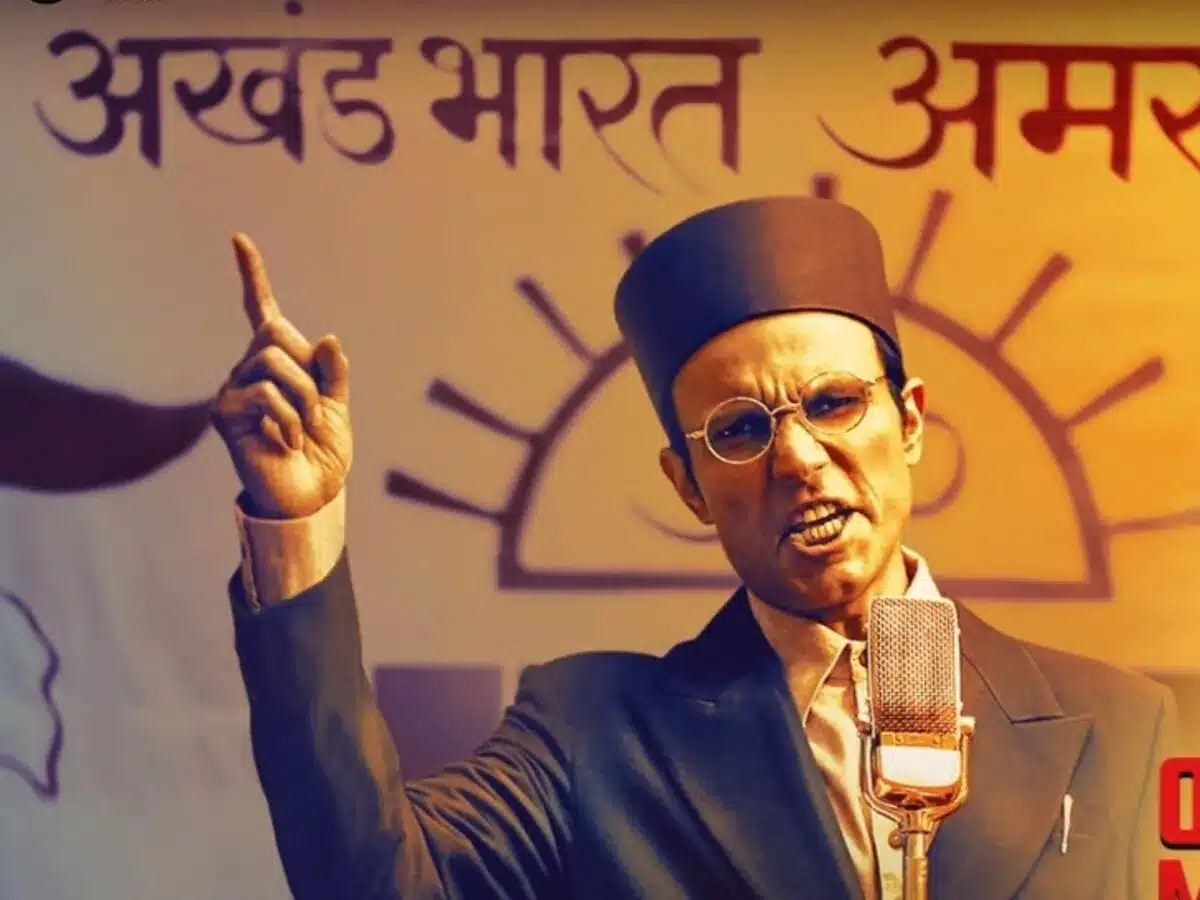INDEED, NOT A MOVIE
‘Swatantarya Veer Savarkar’ is not a movie but nearly three hours of visual pilgrimage into the forgotten or rather hidden memories of India’s freedom struggle. Truly inspiring , and yet disturbing in equal measures if not more, one is compelled to immerse oneself in the river of memory that was witnessed only by the prison cells of Andaman, the tortured inmates, and the even more tortured minds of our freedom fighters. ‘Swantantarya Veer Savarkar’ is not a movie but a heartfelt homage from the present generation of Indians to the countless freedom fighters whose struggles and sacrifices have been overlooked in our textbooks and memories. This generation can be proud that they have done what the generation before failed to do. ‘Swantantarya Veer Savarkar’ is not a movie but a visual prayer of repentance that actorturned- director Randeep Hooda has made for all of us, for we have forgotten what should not have been forgotten.
DISTURBING YET INSPIRING
The movie starts with the atrocities the British committed during the plague epidemics and the ‘balidan’ of Chapekar Brothers, the latter inspiring a boy Vinayak Damodar Savarkar to take up arms against the British. It shows the great vision that Savarkar had for liberating India through a network of revolutionary associations. At one level, like all such biopics, it glorifies and even romanticises the revolutionaries. At another level, it also humanizes the revolutionaries in flesh and blood. As an example, when Savarkar moves from Paris to London, the movie clearly shows that he was expecting a trial in London, and a threeyear imprisonment, and more importantly, the voice of revolution getting a wider audience. At this juncture, the film undergoes a remarkable transformation. The portrayal of Savarkar enduring solitary confinement, relentless beatings, harsh labour, calculated assaults on his sense of self-worth — all designed to break him mentally and emotionally — is depicted vividly yet without resorting to visuals of excessive violence. It is hard to believe that this is the first movie directed by Hooda, who has also lived the life of Savarkar in the movie. Even when depicting the most extreme tortures meant to shatter human dignity, the scenes illustrate how Savarkar maintains his dignity and fiery spirit of freedom without grand gestures or melodramatic words. The movie has shown to the present generation, under what circumstances the so-called clemency petitions were written. Savarkar, beaten and humiliated, stripped of his basic dignity, hungry, and physically broken, gazes at the partially-eaten and tempting food offered in a plate by Sir Reginald Haddock. He is tempted. He physically needs that food. His body needs it. Haddock understands that. Offers the food. A split second. The spirit of the warrior is back in the beaten body of Savarkar, he refuses the food offered. The spirit triumphs over the body. This scene defines Savarkar. No melodrama. Not much of a conversation. A very few dignified gestures from both sides. Perhaps, this will remain for long as one of the best scenes in a biopic.
PATRIOTISM AT ITS BEST
The way the movie takes by its horns the vexed question of the so-called mercy petitions, is more than commendable. In the so-called “petitions,” despite enduring torture, Savarkar had the strength to tell the British that they could keep him in Andamans if they wished, and release other political prisoners. Seeing those words come to life in this film makes one realize the immense courage that burned inside Veer Savarkar’s frail body. One only prays that those who belittle the sacrifice of such purity, do not incur upon their own posterity the effects of that unforgivable sin. Combined with the visuals of the sufferings Savarkar underwent in Andamans, the recital of the lines from the petitions acquires an effect that creates a catharsis in the hearts of viewers. No words of praise can do enough to what the director-actor Randeep Hooda has done to bring out the truth. Hooda has transformed himself into the persona of Veer Savarkar. Or rather the soul of Savarkar seemed to have gripped him. Besides his physical efforts, such as reducing his body weight, the movie effectively portrays how the actor-director has deeply identified with the ‘volcanic’ personality of Savarkar. The scene of only the brother of Savarkar waiting alone upon the former’s release, with a surrealist sound track of scores welcoming Savarkar as they should have, seems to be a fore teller of ingratitude and devaluation of the sacrifice that would come to haunt this nation for long. Definitely, this movie is a worthy tribute that has been long delayed and denied to the sacred memories of the ‘prince of revolutionaries’. It has also shown how in the aftermath of Mahatma Gandhi’s murder, Dr.Narayan Savarkar was lynched by mobs of the apostle of non-violence. Incidentally, Dr.Narayan Savarkar was one of those rare individuals who stood for Dr.B R Ambedkar in the court during Kalaram Temple Satyagraha. The film has done justice to the life of a great man, who had seen mainly suffering and misunderstanding in his own life. ‘Swatantarya Veer Savarkar’ is a must-watch for every Indian, particularly the Indians of the younger generation. They will know that the freedom they have is the result of the sacrifices of extreme kind by not only the freedom fighters, but also their families. I sincerely request every Indian parent to take their children to watch the movie. That is the least we can do to honour one of the greatest of freedom fighters of not just this nation but of humanity.
ABOUT SAVARKAR
Vinayak Damodar Savarkar (28 May 1883 – 26 February 1966) was an Indian politician, activist and writer. He developed the Hindu nationalist political ideology of Hindutva while confined at Ratnagiri in 1922. He was a leading figure in the Hindu Mahasabha. The prefix “Veer” (meaning ‘brave’) has been applied to his name by his followers. After being released from his restriction to Ratnagiri district in 1937, Savarkar
started traveling widely, advocating Hindu political and social unity. The Hindu Mahasabha under Savarkar’s leadership endorsed the idea of India as a Hindu Rashtra (Hindu Nation).

